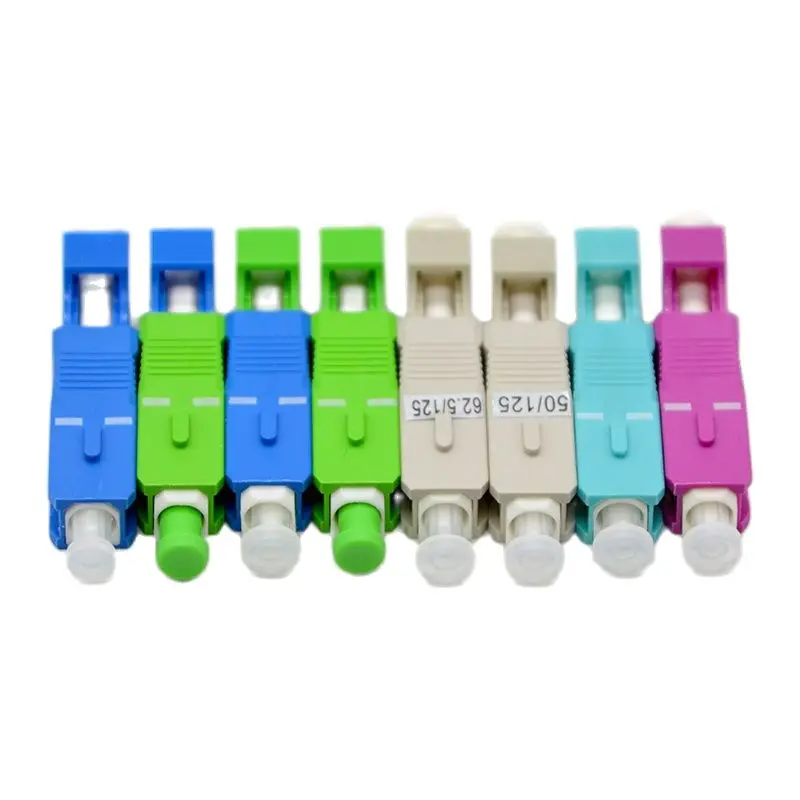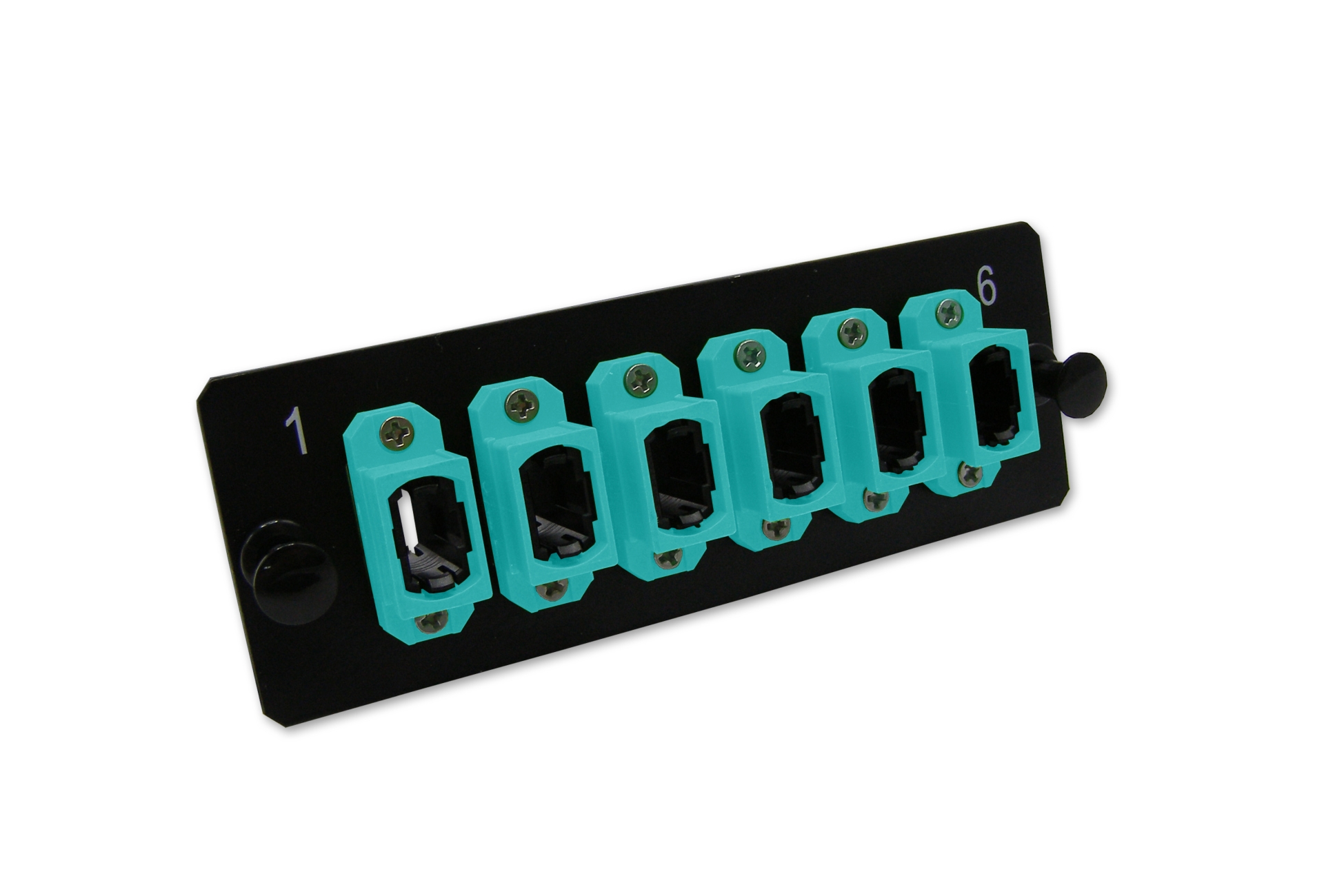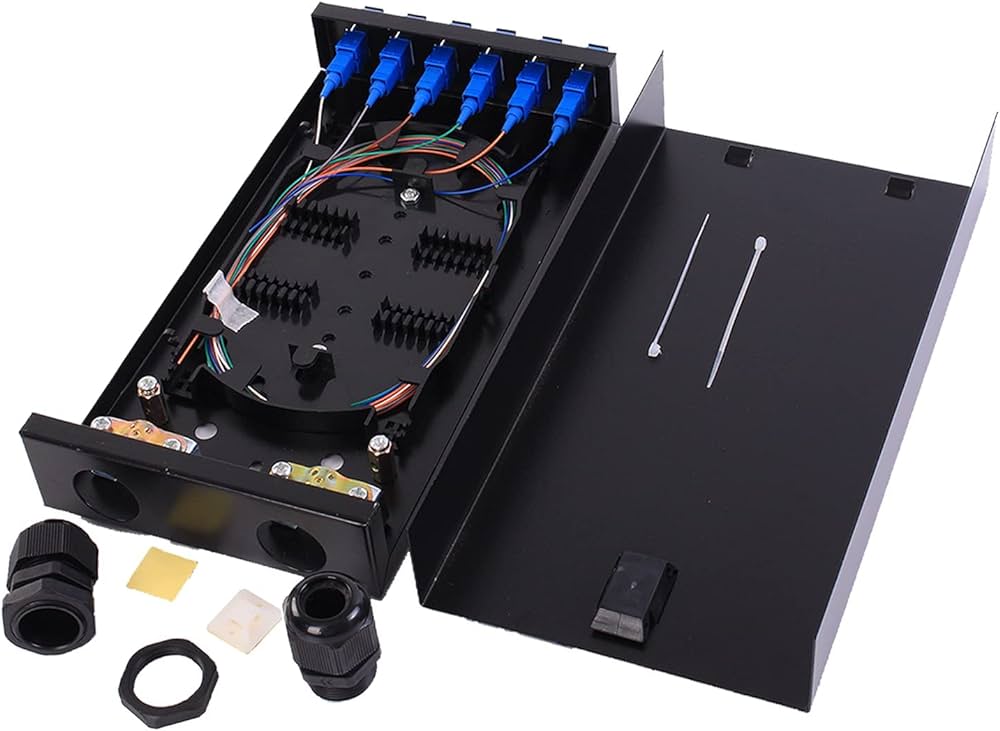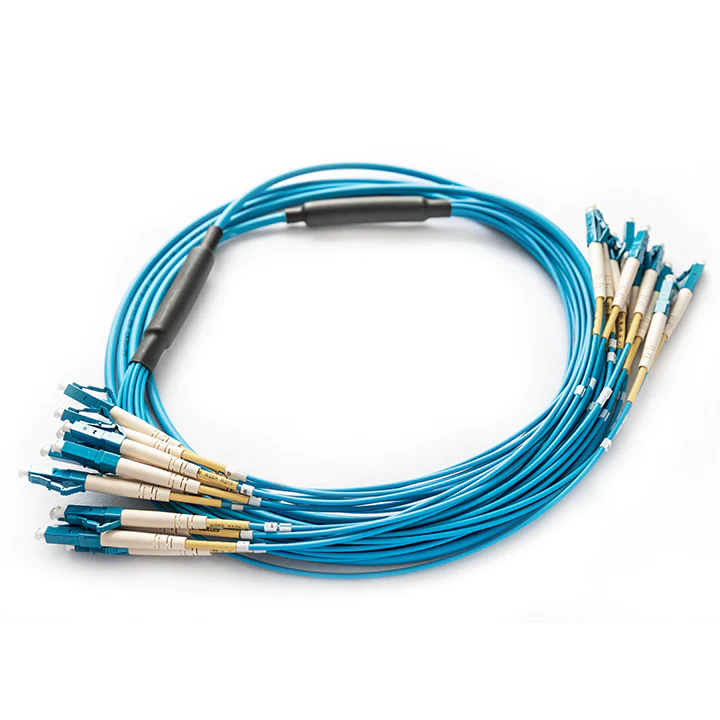How to Choose the Best FTTH Fiber Optical Telecom Solutions

FTTH has become essential in modern telecom solutions. This technology supports the data-intensive needs of today's society. FTTH adoption rates have consistently increased, significantly outpacing traditional copper broadband. Fiber optics provide higher speeds and reliability over longer distances compared to older coaxial cables and DSL. When choosing FTTH solutions, consider options like IP68 waterproof fast connectors, hardened adapters, fiber boxes, fiber terminals, and distribution boxes. The purpose of this blog is to guide readers in selecting the best FTTH solutions.
Understanding FTTH Technology
What is FTTH?
Definition and basic concept
FTTH stands for Fiber to the Home. This technology connects optical fiber directly to residences, apartment buildings, and businesses. The main telecommunications switch extends fiber optic cables directly to a user's location. This setup provides high-speed internet connectivity and supports various services like VoIP, RF video, IPTV, HDTV, and Video-on-demand.
How it works
FTTH uses optical fiber for last-mile telecommunications. The fiber optic cables run from a central office through a Fiber Distribution Hub (FDH) or fiber disruption via an access point. The connection ends at a user’s residency via a terminal. Data transmits using light signals, ensuring higher performance and reliability.
Advantages of FTTH
Speed and bandwidth
FTTH offers unparalleled speed and bandwidth. Optical fibers can transmit data at much higher rates compared to traditional copper cables. Users experience faster download and upload speeds, making activities like streaming, gaming, and video conferencing seamless.
Reliability and stability
FTTH provides exceptional reliability and stability. Optical fibers are less susceptible to electromagnetic interference, ensuring consistent performance. This stability is crucial for applications requiring constant and reliable internet connections.
Future-proofing
FTTH technology is future-proof. The infrastructure supports increasing data demands without significant upgrades. As technology advances, FTTH networks can easily adapt to new requirements, making them a long-term solution for modern telecommunications.
Key Components of FTTH Systems
Optical Line Terminal (OLT)
The Optical Line Terminal (OLT) is a critical component in FTTH systems. Located at the service provider's central office, the OLT manages data transmission between the network and the end-users. It converts electrical signals into optical signals and vice versa.
Optical Network Terminal (ONT)
The Optical Network Terminal (ONT) is installed at the user's premises. The ONT converts optical signals back into electrical signals for use by various devices. It serves as the endpoint of the FTTH network, providing users with high-speed internet access and other services.
Fiber cables and connectors
Fiber cables and connectors are essential for FTTH systems. The cables transmit data using light signals, ensuring high-speed and reliable communication. Connectors link different sections of the fiber network, maintaining signal integrity and minimizing loss.
Factors to Consider When Choosing FTTH Solutions
Network Requirements
Bandwidth needs
Assessing bandwidth needs is crucial when selecting FTTH solutions. Higher bandwidth supports more data-intensive activities, such as 4K streaming and online gaming. Businesses may require even higher bandwidth for cloud computing and large data transfers. Understanding specific bandwidth requirements ensures optimal performance and user satisfaction.
User density
User density impacts the choice of FTTH solutions. High-density areas, like apartment complexes or business districts, demand robust infrastructure. Adequate planning ensures that multiple users can access high-speed internet simultaneously without degradation in service quality. Evaluating user density helps in designing an efficient and scalable network.

Service Provider Selection
Reputation and reliability
Choosing a reputable and reliable service provider is essential. Providers with a strong track record offer better service quality and fewer disruptions. Researching customer testimonials and industry reviews can provide insights into a provider's reliability. A reliable provider ensures consistent and high-quality internet connectivity.
Customer support and service level agreements (SLAs)
Customer support and SLAs are critical factors. Providers should offer responsive customer support to address any issues promptly. SLAs define the expected service quality and uptime, providing assurance to users. Evaluating these aspects helps in selecting a provider that meets specific needs and expectations.
Cost Considerations
Initial setup costs
Initial setup costs for FTTH solutions can be significant. These costs include laying fiber optic cables and installing necessary equipment. While initial expenses may be high, the long-term benefits often outweigh these costs. Proper budgeting and planning help in managing these initial investments effectively.
Ongoing maintenance and operational costs
Ongoing maintenance and operational costs must also be considered. Fiber optic networks generally have lower maintenance costs compared to traditional copper networks. However, regular upkeep is necessary to ensure optimal performance. Understanding these costs helps in making informed financial decisions.
Technological Compatibility
Integration with existing infrastructure
Assessing the integration of FTTH with existing infrastructure is crucial. The compatibility of new fiber optic systems with current network components ensures a seamless transition. Service providers must evaluate the existing hardware and software to determine the necessary upgrades or replacements. This evaluation minimizes disruptions and optimizes the performance of the FTTH network.
Existing copper or coaxial networks may require specific adapters or converters to interface with the new fiber optic systems. These components facilitate the smooth transmission of data between different types of networks. Ensuring proper integration helps maintain service continuity and enhances user experience.
Future scalability
Future scalability is a significant consideration when selecting FTTH solutions. The ability to expand and upgrade the network without extensive overhauls is essential for long-term viability. FTTH technology inherently supports higher bandwidth and faster speeds, making it suitable for future demands.
Service providers should plan for potential increases in user density and data consumption. Scalable network designs accommodate additional users and higher data loads without compromising performance. This foresight ensures that the FTTH network remains efficient and effective as technology evolves.
Investing in scalable infrastructure reduces the need for frequent upgrades, saving time and resources. A well-planned FTTH network can adapt to emerging technologies and growing user needs, providing a robust and future-proof solution.
Evaluating FTTH Providers
Research and Reviews
Customer testimonials
Customer testimonials provide valuable insights into the performance and reliability of FTTH providers. Reading experiences from current users helps gauge service quality. Positive feedback often indicates a provider's commitment to customer satisfaction. Negative reviews highlight potential issues or areas for improvement.
Industry reviews and ratings
Industry reviews and ratings offer an objective assessment of FTTH providers. Experts evaluate various aspects like speed, uptime, and customer support. High ratings from reputable sources signify a provider's excellence in delivering FTTH services. These reviews help in making informed decisions.
Trial and Testing
Pilot programs
Pilot programs allow potential customers to test FTTH services before committing. Providers often offer limited-time trials to showcase their capabilities. Participating in these programs helps assess real-world performance. Users can evaluate speed, reliability, and overall service quality during the trial period.
Performance metrics
Performance metrics are crucial in evaluating FTTH providers. Key metrics include download/upload speeds, latency, and uptime. Consistent high performance across these metrics indicates a reliable provider. Monitoring these metrics during trials ensures the chosen provider meets specific requirements.

Contract and Terms
Length and flexibility of contracts
Contract length and flexibility are important considerations. Short-term contracts offer more flexibility but may come at a higher cost. Long-term contracts often provide better rates but require a longer commitment. Evaluating contract terms helps in selecting an option that aligns with user needs and budget.
Terms of service and guarantees
Terms of service and guarantees define the provider's commitments. Clear terms outline service expectations, including uptime and support response times. Guarantees, such as money-back policies or service credits, provide additional assurance. Understanding these terms ensures a transparent and satisfactory service experience.
Essential FTTH Components and Features
Telecom Solutions
Overview of telecom solutions in FTTH
Telecom solutions in FTTH encompass various technologies and components designed to deliver high-speed internet directly to homes. FTTH dramatically increases connection speeds available to computer users compared to other technologies. The infrastructure includes optical line terminals (OLTs), optical network terminals (ONTs), fiber cables, and connectors. These elements work together to provide reliable and efficient data transmission.
FTTH connections manage projected consumer demands reliably and cost-effectively. Specialists at the FTTH Council Europe report that FTTH connections are the only technology with enough bandwidth to handle future needs. This makes FTTH a preferred choice for modern telecom solutions.
IP68 Waterproof
Importance of IP68 waterproof rating
The IP68 waterproof rating is crucial for FTTH components exposed to outdoor environments. This rating ensures that equipment remains protected against dust and water ingress. Telecom solutions often require installation in harsh conditions, where exposure to moisture and debris can compromise performance.
IP68 waterproof components maintain the integrity of the FTTH network. This protection prevents damage and reduces maintenance costs. Reliable performance in adverse conditions ensures consistent service delivery to end-users.
Fast Connect
Benefits of fast connect solutions
Fast connect solutions offer significant advantages in FTTH deployments. These solutions simplify the installation process, reducing the time and effort required to establish connections. Fast connect technology allows for quick and secure linking of fiber cables, enhancing overall efficiency.
Telecom solutions incorporating fast connect options improve network scalability. Service providers can easily expand or modify the network without extensive downtime. This flexibility supports the dynamic needs of both residential and business users.
Harden Adapter
Role of harden adapters in FTTH
Harden adapters play a crucial role in FTTH deployments. These adapters provide robust and secure connections between fiber optic cables. The design of harden adapters ensures durability and resistance to environmental factors. This makes them ideal for outdoor installations where exposure to harsh conditions is common. Harden adapters maintain signal integrity, reducing the risk of data loss or degradation. By using harden adapters, service providers can ensure reliable and consistent performance in their FTTH networks.
Fiber Box
Features of a good fiber box
A good fiber box is essential for protecting and managing fiber optic connections. The design should offer ample space for organizing cables and connectors. Weather resistance is a key feature, ensuring protection against moisture, dust, and other environmental factors. A robust fiber box should also provide easy access for maintenance and upgrades. Proper ventilation within the fiber box helps prevent overheating, which can affect performance. High-quality materials and construction enhance the longevity and reliability of the fiber box, making it a vital component in FTTH systems.
Fiber Terminal
Importance of fiber terminals
Fiber terminals serve as critical endpoints in FTTH networks. These terminals facilitate the final connection between the fiber optic network and the end-user's premises. The design of fiber terminals ensures efficient signal conversion and distribution. High-quality fiber terminals support various services, including high-speed internet, VoIP, and IPTV. Reliable fiber terminals contribute to the overall performance and user experience of the FTTH network. By investing in superior fiber terminals, service providers can meet the growing demands of modern telecommunications.

Distribution Box
Key considerations for distribution boxes
A distribution box plays a vital role in FTTH networks. The design of the distribution box should ensure protection and efficient management of fiber optic connections. Key considerations include weather resistance, capacity, and ease of installation.
Weather resistance is crucial for outdoor installations. A robust distribution box must withstand harsh environmental conditions. Moisture, dust, and temperature fluctuations can affect performance. An IP68 waterproof rating ensures that the distribution box remains protected against these elements.
Capacity is another important factor. The distribution box should accommodate the required number of fibers and connectors. Adequate space prevents overcrowding and allows for easy maintenance. A well-organized distribution box enhances the efficiency of the network.
Ease of installation is essential for reducing deployment time and costs. The distribution box should feature user-friendly designs. Clear labeling and accessible ports facilitate quick and accurate connections. This simplicity benefits both installers and maintenance personnel.
High-quality materials and construction ensure the longevity of the distribution box. Durable components reduce the need for frequent replacements. This reliability contributes to the overall stability of the FTTH network.
Proper ventilation within the distribution box helps prevent overheating. Overheating can degrade the performance of fiber optic connections. Ventilation systems maintain optimal operating temperatures, ensuring consistent service delivery.
In summary, a well-designed distribution box is critical for the success of FTTH deployments. Weather resistance, capacity, ease of installation, and durability are key considerations. These factors ensure reliable and efficient management of fiber optic connections.
Choosing the best FTTH solutions involves understanding key components and evaluating providers. Consider network requirements, service provider reliability, cost factors, and technological compatibility. Products like CRXCONEC FTTH Solutions offer high-performance fiber splitters and connectors. Abalone-Tech FTTH Distribution Box provides waterproof protection with IP65 rating. Premium-Line FTTH Distribution Box supports multi-purpose applications with IP55 protection. Make informed decisions to ensure reliable and future-proof connectivity. Take action now to select a provider that meets specific needs and guarantees high-quality service.
See Also
How to Efficiently Install Fiber Optic Fast Connectors
What Are the Components of Fiber and 5G?
Understanding the Differences Between FBT and PLC Splitters
About US
Follow Us
AnetFiber company's main products are indoor and outdoor optical fiber cables, outdoor waterproof pre-connected fiber-to-the-home products, PLC optical fiber splitters, optical fiber jumpers and pigtails, MTP®/MPO high-density big data product solutions, optical fiber field quick connectors and research and development molding, injection molding and production of optical fiber distribution boxes, optical fiber chassis cabinets, the market has expanded to the world, Europe, America, Asia, the Middle East and Latin America.
Address
Shenzhen City, Baoan District, Yanluo Street, Tangxiayong Community, Yangyong Industrial Road, Tonggangda New Energy Vehicle Park 406
Contacts
+86 199 2655 3586

